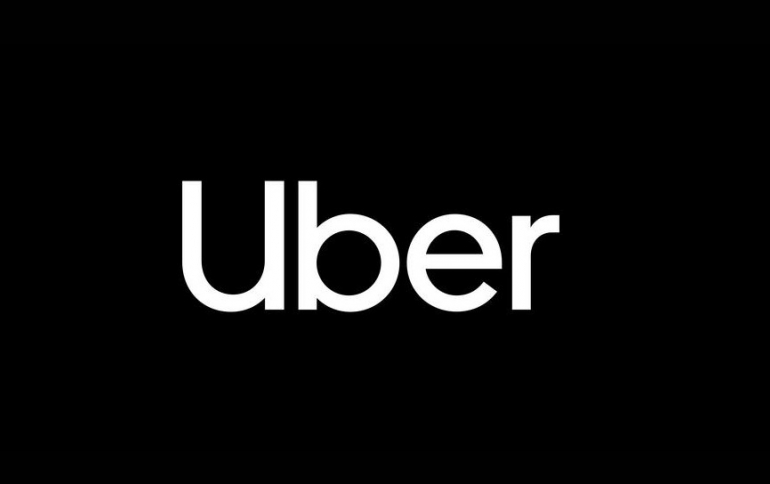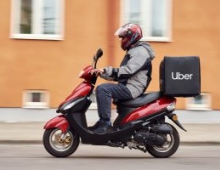
Uber Files for IPO, Unveils Company's Finances
Uber Technologies on Thursday filed publicly with the U.S. Securities and Exchange Commission for its initial public offering (IPO).
The Uber filing gives a comprehensive financial picture of the ride-hailing and transportation services company. Started in 2009, Uber has changed the way millions of people travel and commute but continues to lose money.
According to the filing, Uber had 91 million users on its three platforms at the end of 2018. It operates in more than 700 cities and has paid $78 billion to drivers - independent drivers or couriers who use the company's platform to provide ridesharing services, Uber Eats services, or both.
The foundation of Uber's platform is its massive network, which consists of tens of millions of drivers, consumers, restaurants, shippers, carriers, and dockless e-bikes and e-scooters, as well as underlying data, technology, and shared infrastructure. The company has built proprietary marketplace, routing, and payments technologies. Marketplace technologies include demand prediction, matching and dispatching, and pricing technologies.
The company's Personal Mobility, Uber Eats, and Uber Freight platform offerings each address large, fragmented markets.
The Personal Mobility offering includes Ridesharing and New Mobility. Ridesharing refers to products that connect consumers with drivers who provide rides in a variety of vehicles, such as cars, auto rickshaws,
motorbikes, minibuses, or taxis.
New Mobility refers to products that provide consumers with access to rides through a variety of modes, including dockless e-bikes and e-scooters.
Uber says that revenue derived from its Ridesharing products grew from $3.5 billion in 2016 to $9.2 billion in 2018.
The Uber Eats offering allows consumers to search for and discover local restaurants, order a meal at the touch of a button, and have the meal delivered reliably and quickly. The Uber Eats app was launched just over three years ago. For the quarter ended December 31, 2018, the average delivery time was approximately 30 minutes.
Uber Freight leverages Uber's proprietary technology, to create a transparent, on-demand marketplace that connects shippers and carriers.
Uber Freight reduces friction in the logistics industry by providing an on-demand platform to automate and accelerate logistics transactions end-to-end. Uber Freight connects carriers with the most appropriate shipments available on Uber's platform, and gives carriers upfront, transparent pricing and the ability to book a shipment with the touch of a button.
Since Uber Freight’s public launch in the United States in May 2017, Uber has contracted with over 36,000 carriers that in aggregate have more than 400,000 drivers and have served over 1,000 shippers. Uber Freight has grown to over $125 million in revenue for the quarter ended December 31, 2018.
In March 2019, Uber announced the expansion of our Uber Freight offering into Europe.
According to Uber's filing:
- There were 91 million Monthly Active Platform Consumers (MAPCs) for the quarter ended December 31, 2018.
- There were 1.5 billion Trips on Uber's platform for the quarter ended December 31, 2018.
- There were 3.9 million drivers on Uber's platform for the quarter ended December 31, 2018.
Uber said it has spent more than $1 billion on autonomous vehicle technology to compete with giants such as Alphabet Inc., Apple Inc. and General Motors Co.
The ride-hailing company reported $457 million in research and development expenses for its self-driving unit on Thursday in its filing. That was up from $384 million in 2017 and $230 million in 2016. Those numbers also include other tech projects, such as a flying car initiative. Uber also warned prospective investors that its adjusted losses would rise in the near term thanks, in part, to those costs.
Uber has already begun trimming its spending on self-driving cars. In the fourth quarter, it spent $89 million on its research division, down from $129 million in the second quarter.
The company listed Waymo, Cruise, Tesla Inc. and Apple, among others, as competitors in self-driving.
Uber will follow smaller rival Lyft Inc in going public, and both companies have reported massive losses. Uber said in its filing it expects operating expenses to “increase significantly in the foreseeable future” and cautioned it “may not achieve profitability.”
There are also questions about how Uber will navigate any transition towards self-driving vehicles, a technology which is seen as potentially lowering costs but remains extremely difficult to be relialbly used.
Uber is on track to price its IPO and begin trading on the New York Stock Exchange in early May.
Uber last year had revenue of $11.3 billion, a 42 percent increase from $7.9 billion in 2017.. Gross bookings from rides was $50 billion. But the company lost $3.3 billion, excluding gains from the sale of its overseas business units in Russia and Southeast Asia.





















